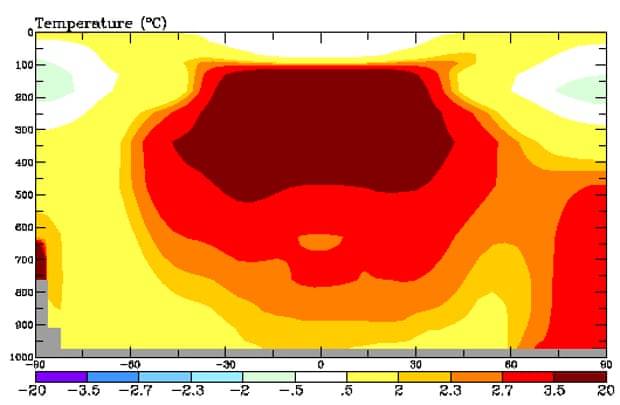Climate contrarians want to endanger the EPA endangerment finding
Although Trump’s EPA administrator Scott Pruitt has been among the biggest proponents of withdrawing America from the Paris climate agreement (using bogus ‘blame China’ arguments to make his case), climate deniers have been unhappy with him. That’s because Pruitt doesn’t want to challenge EPA’s carbon pollution endangerment finding – he thinks it would be a lost cause. A group of contrarian scientists released a white paper trying to pressure him to attack the finding anyway.
The importance of the EPA endangerment finding
Briefly, the endangerment finding stemmed from a 2007 Supreme Court decision in which 12 states sued the EPA, calling on the agency to regulate carbon pollution under the Clean Air Act. The Supreme Court ruled in favor of those states, ordering EPA to determine if greenhouse gas emissions endanger public health and welfare. After considering the scientific evidence, including the latest IPCC report, national climate science assessments, etc., the EPA issued its endangerment finding correctly concluding that carbon pollution clearly endangers public health and welfare via its climate change impacts. As a result, the EPA is legally required to regulate carbon pollution.
The Obama EPA followed that legal requirement by crafting the Clean Power Plan. Early in his presidency, Trump signed an anti-climate executive order calling on EPA to review and revise the Clean Power Plan. In effect, it’s currently on hold. However, that review process takes years, and in 2020 the next president’s EPA could make the carbon pollution regulations even more aggressive. As long as the endangerment finding is in place, there is a legal requirement for the EPA to regulate carbon pollution.
The endangerment finding is based on science, and here to stay
Fossil fuel-loving deniers thus hate the endangerment finding. The problem is that it’s based on overwhelming scientific evidence. As attorney general of Oklahoma, Pruitt frequently sued the EPA and lost nearly every time, so he knows a losing case when he sees one.
Denier white paper attacks the endangerment finding
Enter a white paper published by a number of contrarian scientists, including a few of the less than 3% of climate scientists who reject or minimize human-caused global warming. The white paper tries to make the case that the EPA endangerment finding is wrong. Not surprisingly, aside from being poorly written, the arguments in the white paper are astonishingly bad.
The white paper focuses on what its authors call the “tropical hot spot” (THS), which refers to the fact that as a result of global warming, scientists expect to see a particularly hot area in the lower atmosphere above the Earth’s tropics. As the white paper describes it:
Stated simply, first, the THS is claimed to be a fingerprint or signature of atmospheric and Global Average Surface Temperatures warming caused by increasing GHG/CO2 concentrations.
Nearly a decade ago, current NASA Goddard director Gavin Schmidt provided this figure showing a climate model simulation with that hot spot signature:
But there’s one big problem. In that simulation, the hot spot resulted from a 2% increase in solar activity. As Schmidt said in 2007:
the pattern really has nothing to do with greenhouse gas changes, but is a more fundamental response to warming (however caused). Indeed, there is a clear physical reason why this is the case – the increase in water vapour as surface air temperature rises causes a change in the moist-adiabatic lapse rate (the decrease of temperature with height) such that the surface to mid-tropospheric gradient decreases with increasing temperature (i.e. it warms faster aloft). This is something seen in many observations and over many timescales, and is not something unique to climate models.
So the fundamental claim in the white paper that the hot spot is a fingerprint of human-caused global warming is entirely false, as climate scientists (and my colleagues and I) have been pointing out for a decade. That basic error by itself is enough to toss the denier paper into the recycle bin, but it gets even worse, claiming:
The assumption of the existence of a “Tropical Hot Spot (THS)” is critical to all Three Lines of Evidence in EPA’s GHG/CO2 Endangerment Finding.
I encourage everyone to read the EPA endangerment finding technical support document. The document does discuss some of the many actual fingerprints of human-caused global warming that scientists have observed, but its only mention of the tropical hot spot is to note that it may or may not represent one inconsistency between models and observations:
Click here to read the rest
Posted by dana1981 on Tuesday, 2 May, 2017



